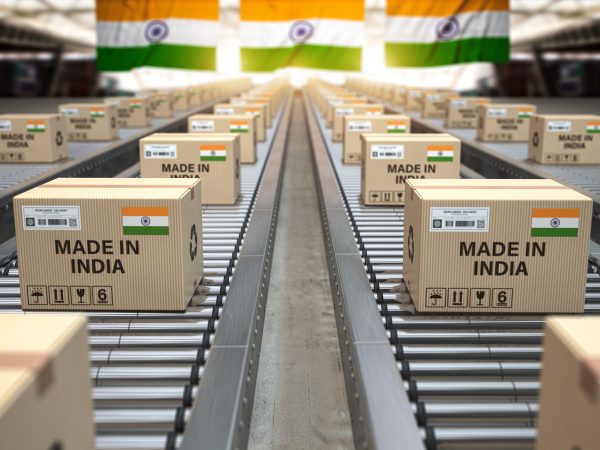India sent shockwaves through the global tech industry last week. Citing no reasons in particular, Prime Minister Narendra Modi’s government mandated a special license for the import of laptops, tablets, and personal computers.
The notification was originally issued to start with immediate effect. But after shock and surprise spread halfway around the world to Silicon Valley, New Delhi deferred the order by three months.
The overnight flip-flop took many by surprise. But in fact, it was only part of an ongoing overhaul of the consensus that has ruled India’s economic policy for the last three decades.
Back in the early 1990s, India opened up several sectors of its economy to private and global competition. The result was a historic period of economic growth. In 1988, trade made up about 13.5 percent of India’s GDP. Ten years later, it made up as much as 24 percent. Services trade more than doubled as a percentage of GDP in that period, and India’s real GDP increased by about 70 percent.
In the aftermath of that experiment, a general consensus seemed to develop in India’s economic discourse that trade is good. Across successive governments, India’s highest tariff rates on non-agricultural products fell rapidly: from 150 percent in 1991-92 to 40 percent in 1997-98, 20 percent in 2004-05, and 10 percent in 2007-08.
When Modi was elected in 2014, there was a sense among some observers that he would advance this. During his campaign, Modi promised to reduce state intervention in the economy. “Minimum government, maximum governance,” he declared.
Yet, that era now seems over. In recent years, India has used trade restrictions as a tool for multiple purposes: to stall domestic inflation, punish geopolitical rivals, and encourage local industries.
Sometimes, this might seem justifiable. Last month, India — the world’s largest rice exporter, accounting for 40 percent of all global exports — banned the export of several varieties of rice. That came on the back of record inflation numbers at home, with prices having gone up by 30 percent since last October.
But at other times, India’s tariff reverses have felt like a throwback to the import substitution era of the Cold War. Many believe that the deferred computer import ban, for instance, is aimed at encouraging local products by stifling foreign competition.
India has cited a similar lack of confidence in domestic competitiveness during trade talks. In 2019, it pulled out of Asia’s Regional Comprehensive Economic Partnership (RCEP) bloc for fears of being inundated by imports from its partners. That year, India had registered a trade deficit with 11 of those countries.
India is increasingly buying into the idea that it can boost local production by shutting down imports. According to the World Trade Organization, India’s average most favored nation (MFN) tariff rate increased from 13 percent in 2014-15 to 14.3 percent in 2020-21. Since 2016, tariffs have been hiked on well over 500 item categories, according to the Indian Express.
In many ways, India’s ongoing protectionist push is an undoing of its post-1991 liberalization discourse. It’s yet unclear whether this reversal will prove more successful at boosting local industries than the import substitution efforts of the last century. But the timing of this shift is most curious.
In the wake of the United States’ tariff wars with China, India was expected to woo U.S. businesses and investors as they looked for an alternative market. But overnight licensing changes and tariff hikes don’t generally inspire much investor confidence. Few things roil an economy more than policy uncertainty and sudden flip-flops.
There are already signs that India has been unable to gain from China’s losses so far. In 2020, economists Shoumitro Chatterjee and Arvind Subramanian studied the decline in China’s market share across multiple sub-sectors of manufacturing since the 2008 global financial crisis. Between 2008 and 2018, China lost an export market of almost $140 billion across industries such as footwear, ceramics, and apparel. That figure, Chatterjee and Subramanian wrote, is a whopping 57 percent of India’s total manufacturing exports. Yet, the country that gained the most from China’s loss wasn’t India; Vietnam and Bangladesh both benefitted more.
To be sure, India’s turn toward protectionism is hardly unique or unparalleled. From 2001 to 2008, global merchandise trade almost tripled from $6 trillion to about $16 trillion, according to the World Trade Organization. Since the recession, it has moved flatter — coming in around $19 trillion in 2019 before the pandemic. Populism and trade wars have ravaged the world’s biggest economies, and many of them increasingly seem unlikely to turn the tide around.
But for India, with its huge demographic opportunity, the inward turn could not have come at a worse time. Despite the size of its economy, India has long struggled to build a footprint in global trade. Last year, India made up less than 2 percent of world trade. A shift away from trade liberalization is unlikely to help.


